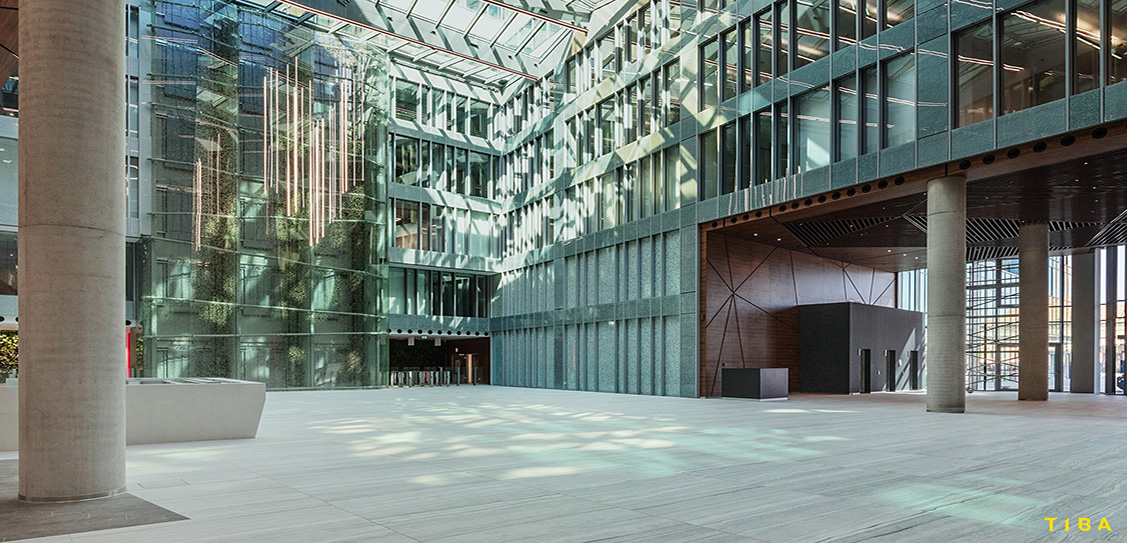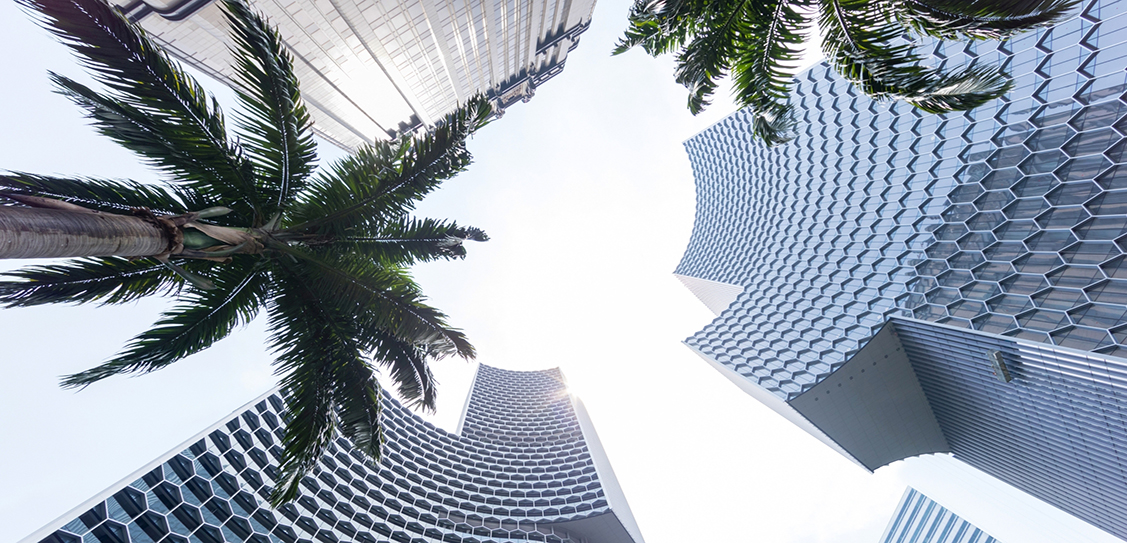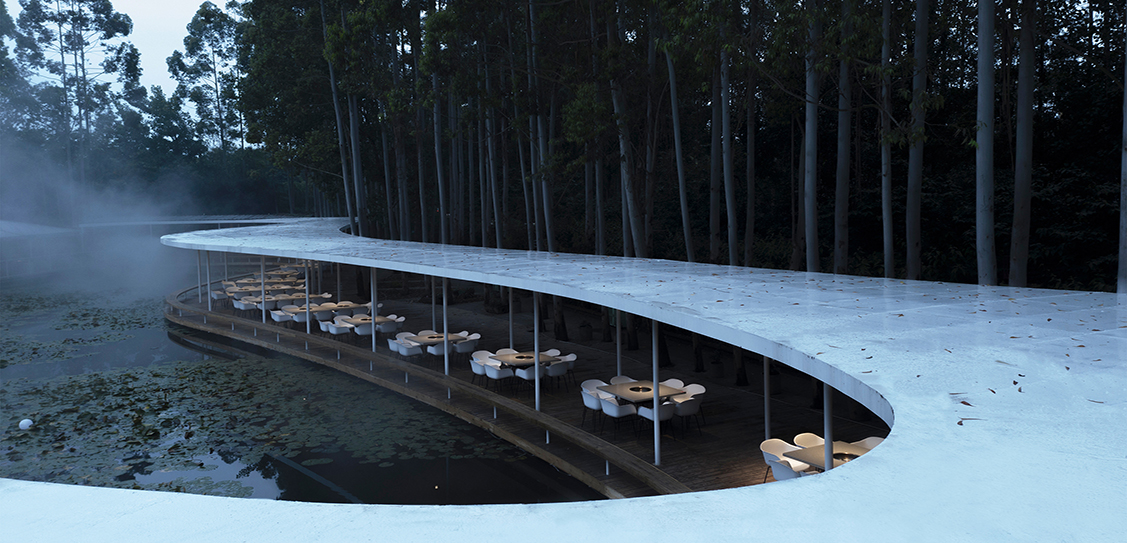Designed by TIBA Architect Studio, a key goal for the New Headquarters of Magyar Telekom and T-Systems Hungary was to establish a creative and inspirational work environment, which has been met with smart, energy-saving technology and its people-friendly interior spaces. Whilst the interior caters to the latest technology trends, the exterior carries a 21st century ambiance and the shape was developed to create a certain character to the building. Aside from the office space, there are two restaurants, two cafés, and a conference center that can hold up to 300 people with a fitness and wellness center that has an outdoor 200 meter running track on top.
DUO integrates living, working and retail with public gardens, cultural happenings, and a diverse urban context. While DUO’s two towers contain the main functional elements – one tower accommodates 660 residences and the other corporate offices and a five-star hotel operated by Andaz – the structures dematerialize as they reach the ground, opening out into a porous public landscape.
The Land Rover Regional Offices in Shanghai uses façade to utilize parametric tools to transform inspiration from bamboo forests into a complex frit pattern. In the end, the buildings interact dynamically with the changing atmosphere of Shanghai and are in a constant state of metamorphosis.
Ranwu Lake (Tibet) International Self-drive Tour and Recreational Vehicle Campsite has a total project area of about 70 mu. Phase 1 of the Project uses an area of 2,400 square meters, and is composed of an integrated service center, 9 high-end holiday hotel buildings, a bar, tea bar, Tibetan specialty exhibition and sales center, BBQ buffet, medical assistance center, star-rated bathroom facilities, tent camping, 176 car parking lots, 5 tour bus parking lots, 7 RV parking lots and much more.
A new R&D Center for Nexen is located at the western edge of Metropolitan Seoul that is currently under development as a hub of cutting-edge industries, hosting many research facilities for South Korea’s leading corporations. The building is equipped with a series of multidisciplinary research and development labs covering all aspects of the company’s technology. It also houses supporting offices, various types of meeting areas and welfare facilities for workers. The design began with the goal of reinventing a new type of urban research facility suitable in a dense urban context. It proposes the building to be organized into four programmatic zones while maximizing connectivity and interactivity.
Wuxiang Lantingfu is a property co-developed by Shimao, Dynasty and Yango. Functional spaces of the sales center are intertwined, featuring the alternation between interior space and courtyard. Some are wide open, others secluded and tranquil. The circulation is like flowing water, open, free, active and lively. The building is a perfect creation of spiritual home and paradise. The façade adopts a gradual change in texture, like rippling waves in the light and shadows, which creates a wonderful and striking view.
121 Seaport’s elegant form cleverly belies the reasons for which it is most celebrated: its implausibly low consumption of energy and materials, highly-efficient floor plate design, innovative siting and thoughtful orientation within its surroundings. The complexities of the site, including an underground transit line, drove creative orientation and material selection, shaping the building into an unprecedented embodiment of environmentally sustainable design.
Situated in a superior ecological area of Chengdu, the design for Garden Hotpot Restaurant is to integrate local culture with the natural environment. On the premise of paying the greatest respect to the site’s environment, MUDA-Architects decides to eliminate the architectural scale, leaving out walls, only using pillars and boards to lightly hide the building in the eucalyptus woods, letting the building gently integrate with the site and delineating the shape of lake in a light and peaceful way. Thin three-meter-tall columns support a roof canopy that meanders alongside the site’s lotus pond, which makes the building look like the steam and smoke from the boiling pots curling between the pillars and trees.
To see more amazing entries from this year’s WAN Awards please click here.



